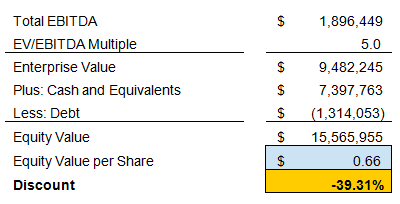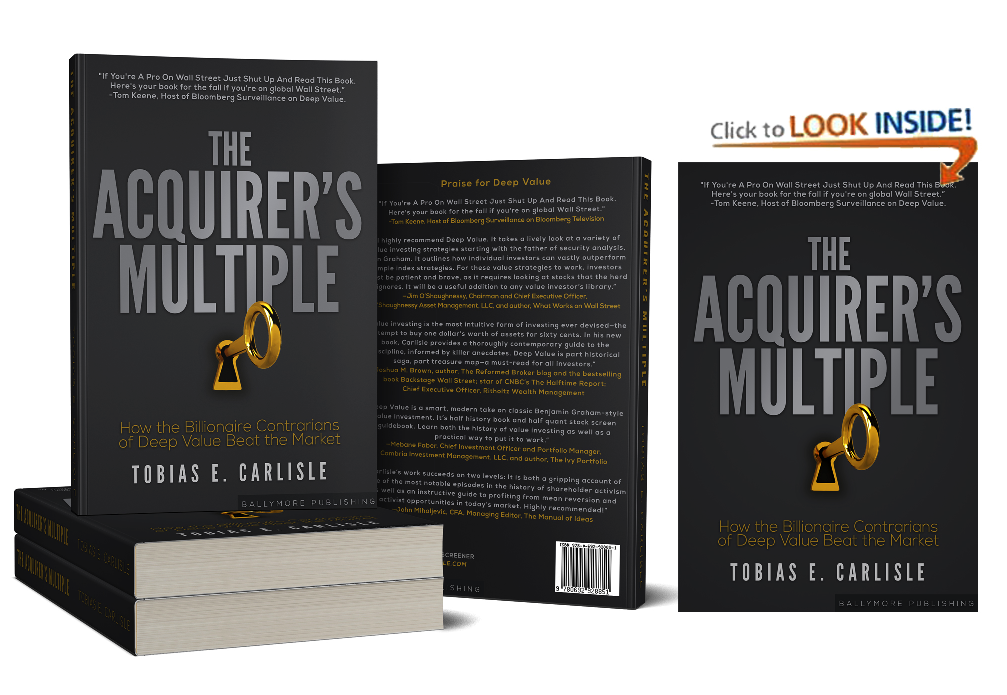Michael B. Rapps of Geosam Capital Inc has provided a guest post on WGI Heavy Minerals Inc (TSE:WG).
Michael recently joined Geosam Capital Inc., a Toronto-based private equity firm that focuses on small-capitalization activist investments and distressed debt investments. Prior to joining Geosam Capital Inc., he practiced law for 3 1/2 years at Davies Ward Phillips & Vineberg LLP where he focused on M&A and securities law. He is a graduate of McGill University with a BCL and L.LB (Bachelors of Civil and Common Laws).
Here’s his take on WGI Heavy Minerals Inc (TSE:WG):
WGI Heavy Minerals (“WGI”) operates two businesses: (i) the mining and sale of abrasive minerals; and (ii) the sale of aftermarket replacement parts for ultrahigh pressure waterjet machine cutting systems. WGI trades at $0.40/share on the Toronto Stock Exchange under the symbol “WG”. There are 23,617,610 shares outstanding for a market cap of approximately $9.4 million. I believe the upside in WGI’s share price is at least +65% and the downside is at least +22%.
Abrasive Minerals
WGI’s principal mineral product is garnet, which is used as an abrasive in sandblast cleaning and waterjet cutting of metals, stone, concrete, ceramics, and other materials. The majority of the company’s garnet is supplied pursuant to a distribution agreement with an Indian supplier that was formerly owned by WGI (WGI sold this company in 2008 and distributed the proceeds of the sale, together with a portion of its cash on hand, to shareholders). The distribution agreement guarantees WGI a supply of a minimum amount of garnet annually, with additional amounts to be supplied as mining capacity expands. This distribution agreement expires at the end of 2016. WGI also obtains garnet from its own mining operations in Idaho. Abrasive minerals represent 80-85% of WGI’s sales.
Waterjet Parts
WGI manufactures and distributes aftermarket replacement parts for ultrahigh pressure waterjet cutting machines under the “International Waterjet Parts” brand. Waterjet machines are used to cut a variety of materials using a thin, high pressure stream of fluid, often in very intricate and complex shapes. Waterjet technology continues to improve and take market share from older technologies, such as saws. According to WGI, the company competes in this market with OEMs, such as Flow International, Omax, Jet Edge, KMT and Accustream. Waterjet parts represent 15-20% of WGI’s sales.
Book and Liquidation Value
Below is an estimate of WGI’s book value and liquidation value:
Assuming additional liquidation costs of $500,000, the liquidation value would be reduced to $0.54/share (or $0.49/share on a diluted basis). As you can see, WGI trades at a meaningful discount to both its estimated liquidation value and its book value.
Profitability
I generally prefer to rely on tangible asset values than estimates of future profitability when looking at an investment opportunity. In this case, WGI trades substantially below its book and liquidation values. However, it is also profitable. In 2009, WGI generated EBITDA of $1,896,449 as follows:
This implies an EV/EBITDA multiple of 1.8. Investors can argue about what an appropriate multiple is, but we would likely all agree that this multiple is too low. Applying an EV/EBITDA multiple of 5.0 (for the sake of conservatism), WGI’s equity value per share is $0.66/share (65% upside).
Catalyst
WGI has two large shareholders. Jaguar Financial Corporation owns 3,777,100 shares representing 16% of the outstanding shares (acquired at $0.35/share). Cinnamon Investments Limited owns 3,098,500 shares, representing 13.1% of the outstanding shares (a portion of these shares was acquired as recently as January 2010 at $0.41/share).
Jaguar is known in Canada as an activist investor and has launched a number of proxy contests and take-over bids to unlock value at Canadian companies. Jaguar recently successfully challenged the acquisition of Lundin Mining by Hudbay Minerals. In Q4 2009, Jaguar obtained a seat on WGI’s board and pushed for WGI to use a portion of it cash to repurchase shares, which it did in December 2009 (at a price of $0.395/share).
At WGI’s upcoming annual meeting, I would expect Jaguar and Cinnamon to vote against the confirmation of WGI’s shareholder rights plan. The plan was adopted after Jaguar announced its acquisition of shares but prior to the time Jaguar received a board seat. With 29.1% of WGI’s shares voting against the rights plan, there is a decent chance the rights plan will be defeated, allowing Jaguar to launch a take-over bid for WGI in order to put them in play (a tactic they use routinely). I would also expect Jaguar to push WGI to take additional value-enhancing actions, such as additional share buybacks, and for its patience to run out if such actions are not undertaken in the near term.
Risk
The principal risk I see in WGI relates to its Idaho mining operations. WGI’s disclosure indicates that the mineral resource at WGI’s operating mine in Idaho has been declining in recent years. Accordingly, WGI is undertaking exploration (and eventual development) of the lands contiguous to its current mine, which it believes contain additional garnet. A complete depletion of the existing garnet would negatively affect WGI as its Idaho mine currently contributes approximately 17% of revenues (although WGI increased the amount of garnet it receives annually from India last year, so this percentage should be lower now). Additionally, significant expenditures on exploration and development would reduce WGI’s cash on hand.
Conclusion
Given that WGI is a profitable and growing company, I would argue that WGI should trade at least at its book value (67-85% upside on a diluted/non-diluted basis) and we should look at its liquidation value to determine our downside protection (22-35% upside). On an EV/EBITDA basis, WGI should also trade at a minimum of $0.66/share, providing upside of at least 65%. In the case of an acquisition of each of WGI’s divisions, the upside could be even greater.
[Full Disclosure: I do not hold a position in WGI. This is neither a recommendation to buy or sell any securities. All information provided believed to be reliable and presented for information purposes only. Do your own research before investing in any security.]




